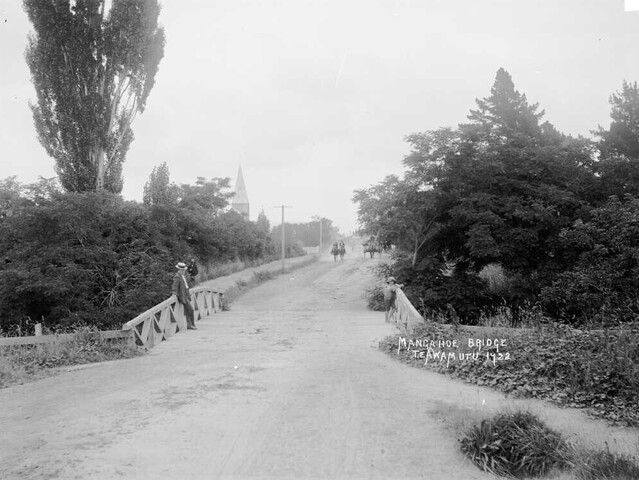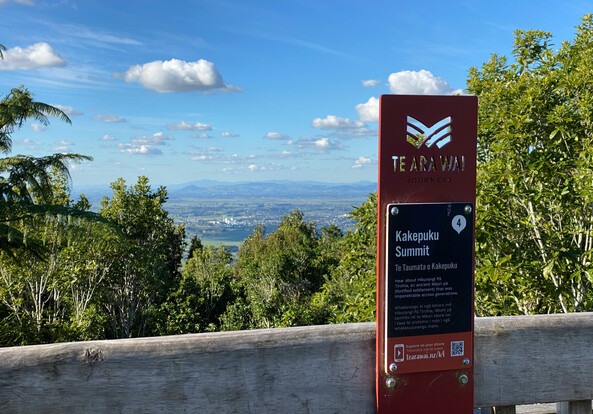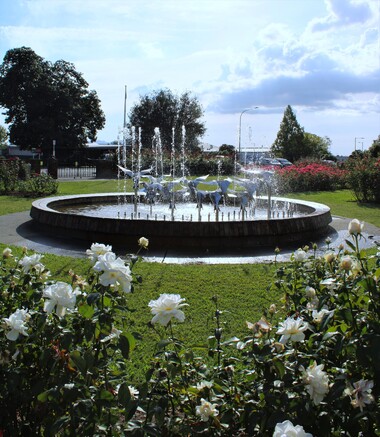About Te Awamutu
Literally translated, Te Awamutu means 'the river cut short', marking the end of the navigable section of the Manga-o-hoi Stream. Te Awamutu is also known as the ‘rose town’, for it's many elaborate rose gardens in the centre of town. The town is also of historic significance, as an area settled by Tainui and later the Otawhao Mission. It is also the site of the Battle of Ōrākau, one of the most significant battles in the New Zealand Wars. Read all about Te Awamutu below.
Historic Te Awamutu
Tainui Maori first settled the Waikato area as early as the fourteenth Century. From Kawhia they consolidated and gradually spread, settling most of the Waikato and the King Country.
The name Te Awamutu refers to the end of the river; the Manga-o-hoi stream. Canoes could navigate the stream as far as Te Awamutu and from then travel had to be overland. At Te Awamutu were two important Pa - Otawhao and Kaipaka. Missionary settlement followed later and a permanent church building at St. John's was erected in 1854. Ōrākau is located approximately 3.5 km south-east of Kihikihi on the Arapuni Road. Between 31 March - 2 April 1864 the Battle of Ōrākau occured. Probably the best known of the New Zealand Land Wars.
Mangahoe Bridge, Te Awamutu. Price, William Archer, 1866-1948 :Collection of post card negatives. Ref: 1/2-001218-G. Alexander Turnbull Library, Wellington, New Zealand. /records/22797731
Claims to Fame
Rose Town
Te Awamutu has taken the rose as a symbol, and is the self-proclaimed Rose Capital of New Zealand. The town has elaborate rose gardens in the centre of the town and a local rose society that meets monthly. Many local businesses use "Rosetown" in their name, and the symbol of the rose is widely used on local signs and billboards. The local paper, Te Awamutu Courier, has a symbol of a rose in the masthead on its front page.
The Finn Brothers / Crowded House
Te Awamutu's best known residents are the Finn Brothers, Tim Finn and Neil Finn, whose musical careers include Split Enz, Crowded House and their current solo and collaborative works. The town is mentioned in Split Enz's song "Haul Away", and also in Crowded House's 1986 song "Mean to Me", the debut single from their self-titled debut album. Tim Finn and Neil Finn grew up in Teasdale Street in the centre of Te Awamutu, and the site of their childhood home is now a retirement home.
Te Awamutu today
As of June 2022, Te Awamutu has a population of approximately 13,500 people, making it the fifth-largest urban area in the Waikato behind Hamilton, Taupō, Cambridge and Tokoroa. We have a thriving community with many successful local businesses and industry, sporting groups, schools and community groups. Te Awamutu is governed by the Waipā District Council and the current Mayor is Susan O'Regan. The Te Awamutu Business Chamber is a good source of local business information.
Selected images courtesy of Te Awamutu Camera Club / Arthur Uden / Hamilton and Waikato Tourism / Bea Schiller
Destination Te Awamutu
Destination Te Awamutu is the official tourism website of Te Awamutu, Pirongia and Kihikihi. It is administered by the isite Te Awamutu.
Get in touch
1 Gorst Avenue, Te Awamutu 3800
Monday - Friday: 9am - 5pm
Saturday: CLOSED (Due to staff shortage)
Sunday: CLOSED
ANZAC: CLOSED
Phone: 07 871 3259
Email: consultant@teawamutuinfo.co.nz












